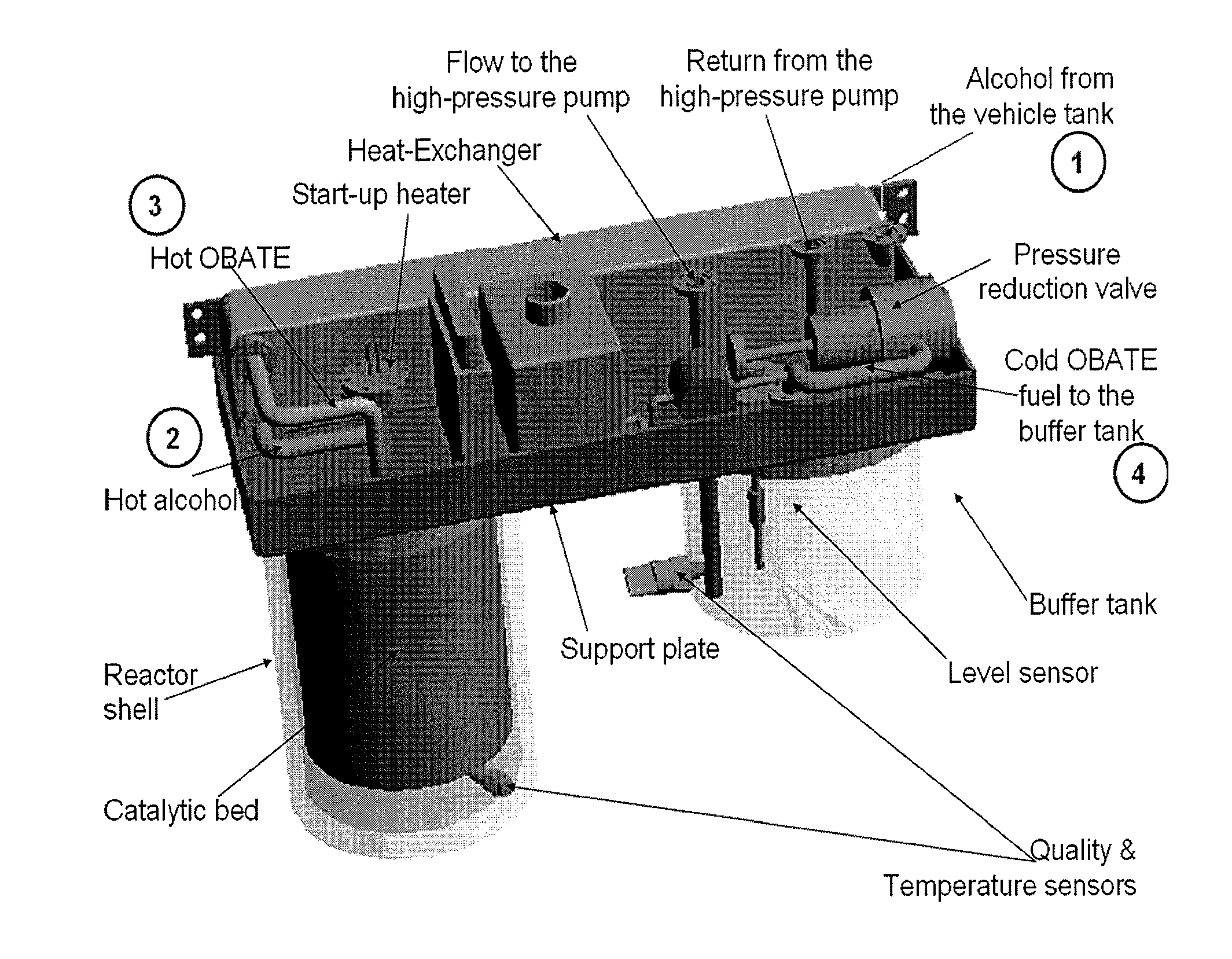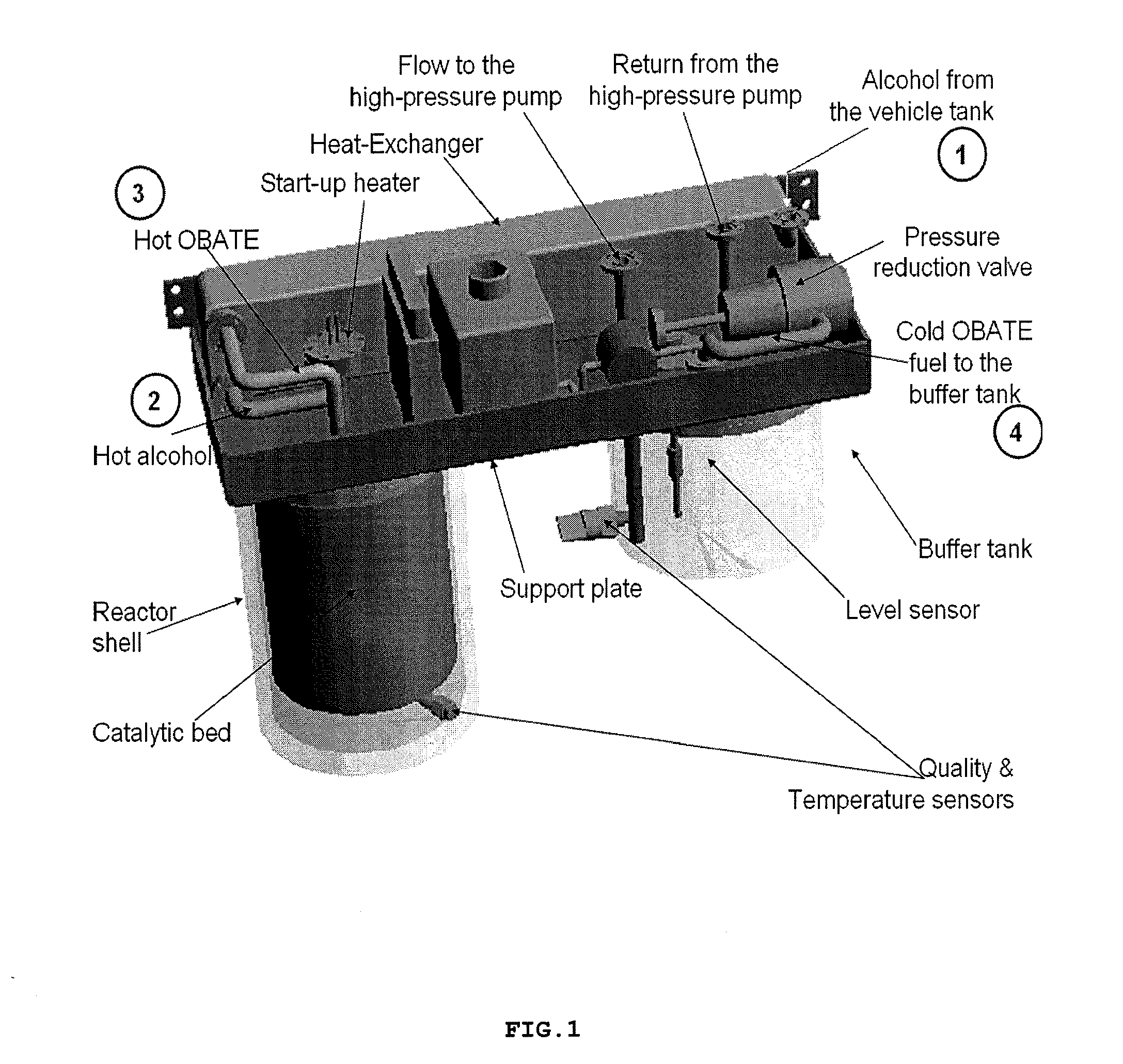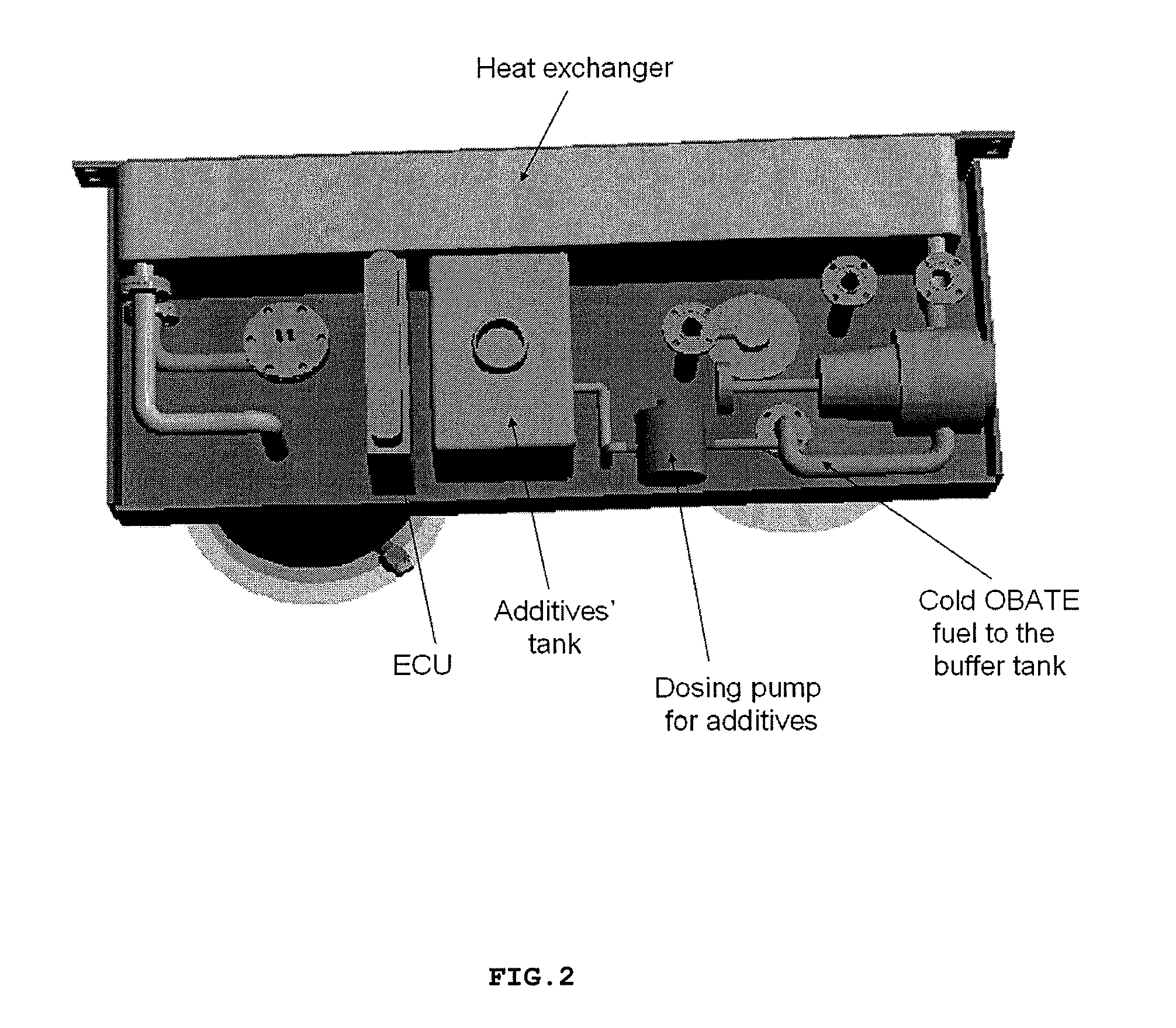Process for preparing a fuel for automotive applications, stationary engines and marine applications by catalytic liquid phase alcohol conversion and a compact device for carrying out the process
a technology of catalytic liquid phase alcohol and automotive applications, which is applied in the direction of liquid-liquid reaction processes, machines/engines, mechanical instruments, etc., can solve the problems of non-combusted fuel and carbon monoxide, affecting the performance of the engine, and affecting the operation efficiency of the device, so as to achieve compactness and operation efficiency, the effect of contributing to the compactness of the devi
- Summary
- Abstract
- Description
- Claims
- Application Information
AI Technical Summary
Benefits of technology
Problems solved by technology
Method used
Image
Examples
example
[0051]The reactor containing a catalyst bed is operated at an inlet temperature of 220° C. and under a pressure of 60 bars. The primary fuel is wet ethanol (5 wt % water), and the fuel flow is adjusted to reach a conversion degree of 70% with the present catalyst mass. The primary fuel exits the primary fuel tank at approximately 20° C. and passes through the heat exchanger, which is designed for pre-heating the primary fuel up to 220° C. (no need of the electric start-up heater at this stage). The hot primary fuel passes through the catalyst bed, whereby 70% of the ethanol is converted to diethyl ether. The reaction is exothermic, and the OBATE fuel mixture reaches a temperature of 236° C. During its subsequent passage through the heat-exchanger the fuel mixture is cooled down to approximately 50° C. The pressure of the OBATE stream is reduced to about 5 bars and some lubrication medium is added prior to storage of the mixture in the buffer tank.
PUM
 Login to View More
Login to View More Abstract
Description
Claims
Application Information
 Login to View More
Login to View More - R&D
- Intellectual Property
- Life Sciences
- Materials
- Tech Scout
- Unparalleled Data Quality
- Higher Quality Content
- 60% Fewer Hallucinations
Browse by: Latest US Patents, China's latest patents, Technical Efficacy Thesaurus, Application Domain, Technology Topic, Popular Technical Reports.
© 2025 PatSnap. All rights reserved.Legal|Privacy policy|Modern Slavery Act Transparency Statement|Sitemap|About US| Contact US: help@patsnap.com



